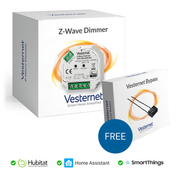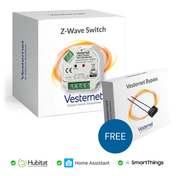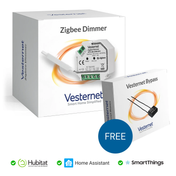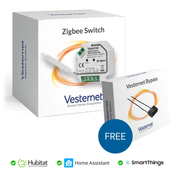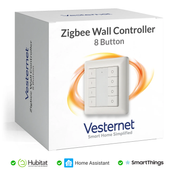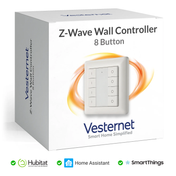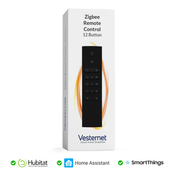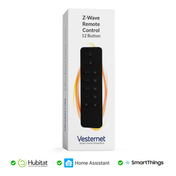Smart home enthusiasts are frequently faced with tough decisions when it comes to choosing between similar products from the same brand. In this case, we have the Fibaro Home Center 2 and 3 - two efficient and effective home automation hubs that can form the core of any smart home system.
With the Home Center 3 being the newer version, you might be torn between sticking to the tried-and-tested Home Center 2 or upgrading to the new version. This detailed comparison should assist you in making that decision.
Fibaro Home Center 2
The Fibaro Home Center 2 (HC2) has been the trusted heart of many smart homes. Its robust performance is driven by an Intel Atom 1.6GHz processor and 1GB RAM. HC2 supports Z-Wave and works excellently with Fibaro’s range of sensors and devices. Known for its advanced scripting and automation capabilities with LUA, the HC2 has been the choice for those who desire deep customization.
Fibaro Home Center 3

On the other hand, the Fibaro Home Center 3 (HC3) is the latest offering in the Home Center series. While it maintains support for Z-Wave, the HC3 adds new compatibility with Wi-Fi, ZigBee, and 433 MHz devices, providing a broader range of device compatibility. It’s powered by a Quad-Core ARM Cortex A53 1.2GHz processor, and with a larger 2GB of RAM and 8GB storage, it offers more processing power and space than the HC2.
What's the difference between Home Center 2 and 3?
The main difference between the Home Center 2 and 3 lies in the compatibility and processing capabilities. While HC2 mainly supports Z-Wave devices, HC3 expands on this by also supporting Wi-Fi, ZigBee, and 433 MHz devices. Furthermore, HC3 comes with more powerful hardware, allowing for faster processing and a smoother experience.
Pros & Cons
Home Center 2
Pros
- Reliable performance
- Advanced customization with LUA
- Proven track record
Cons
- Limited to Z-Wave compatibility
- Less powerful hardware compared to HC3
Home Center 3
Pros
- Supports a broader range of devices (Z-Wave, Wi-Fi, ZigBee, 433 MHz)
- More powerful hardware
- Maintains customization abilities of HC2
- Newer product with less user feedback
- Potentially unnecessary if you only use Z-Wave devices
Breaking Down the Tech Specs
You may be wondering what all these features and specifications mean, and why they matter when comparing the Fibaro Home Center 2 and 3. Let's break this down to help you make an informed decision.
Scenes
Let's say you typically get home at 5:30 pm and want your home warmed up, the hallway light turned on, and the kettle boiling. Fibaro's Scene Control feature allows you to automate these actions. You have three ways to create Scenes with Fibaro: Block Scenes, Magic Scenes, and LUA Scenes.
Block Scenes and Magic Scenes are for simpler automations while LUA Scenes allow for complex automations, given you have some basic programming knowledge. You can also download other users' Scenes from the Fibaro Marketplace for ease and experimentation.
Virtual Devices - Fibaro Quick Apps
These non-physical devices in the Fibaro Home Center Controller let you control products across different networks, like controlling your AV equipment via your Wi-Fi/Ethernet network. They can also be used to control multiple scenes simultaneously. You can download and try out Quick Apps or Virtual Devices from other users via the Fibaro Marketplace.
Software Features
The Fibaro system offers comprehensive remote and mobile access across various devices, enabling you to control your smart home no matter where you are. Use Fibaro Widgets for quick access to frequently-used scenes. If you use voice control, you can integrate your Fibaro system with Amazon Alexa, Google Assistant, or Siri (via Siri "shortcuts"). Additionally, both the Fibaro Home Center 2 and 3 support VOIP, allowing for communication over an IP network.
Geolocation and Plug-ins
Geolocation can trigger certain scenes based on your proximity to your home, adding another level of automation. The system also supports numerous Plug-ins from Fibaro and third-party developers, providing advanced features without the need for coding. Regular backups are performed to ensure no loss of data in the event of issues.
Home Automation Support
Both Fibaro Home Center units support Z-Wave and Z-Wave Plus devices. They are equipped with two types of Z-Wave chips, the Series 300 and Series 500, each with their distinct features and potential limitations. Fibaro Home Center 3 additionally supports ZigBee, Bluetooth Low Energy (BLE), 433MHz and 868MHz, making it a highly versatile smart home controller.
Hardware and Compatibility
The Fibaro Home Center Controllers are compatible with IP CCTV cameras and Satel alarm systems, offering comprehensive security solutions. Both units regularly back up data, with the Home Center 3 using internal storage and Home Center 2 utilizing an external USB drive. The Fibaro Home Center 3, with its enhanced capabilities and added hardware, stands out as a more advanced controller. However, your choice will ultimately depend on your specific home automation needs.
Spec Comparison Table
| Features | Home Center 2 | Home Center 3 |
|---|---|---|
| Scene Control | Yes | Yes |
| Virtual Devices | Yes | Yes |
| General Software | Yes | Yes |
| Home Automation Support | Z-Wave (868.4MHz), IP Camera Support, Satel Alarm Integration | Z-Wave (868.4MHz), ZigBee, BLE, 433MHz, 868MHz, IP Camera Support, Satel Alarm Integration |
| Hardware Features | Dual-core Intel Atom (1.6GHz), 1GB RAM, 2GB Storage (+ 4GB Recovery Disc), Ethernet, 4 USB Ports, Z-Wave Series 300, Cast Alloy Case, 225 x 185 x 42mm Dimensions | Quad-core Arm Cortex A53 (1.2GHz), 2GB RAM, 8GB Storage, WiFi, ZigBee, BLE, 433MHz, 868MHz, 1 USB Port, Z-Wave Series 500, Soft-Touch Plastic Case, 220 x 140 x 35mm Dimensions |
Conclusion
If your smart home is built around Z-Wave and you appreciate the ability to deep dive into custom scripting, then the Home Center 2 should suit your needs.
However, if you use a broader range of devices and desire a more powerful processor to handle your automation needs, the Home Center 3 is the clear winner. Its expanded compatibility with Wi-Fi, ZigBee, and 433 MHz devices makes it a more flexible hub for varied smart home setups.
You can buy the Fibaro Home Center 3 here.

